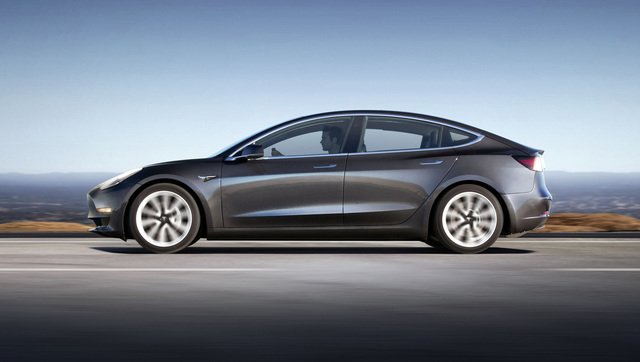A year ago, Tesla CEO Elon Musk pledged to revolutionize auto manufacturing with a major expansion of the company’s electric-car factory in Fremont, California.

But after disrupting the automotive world with innovative technology, stunning designs and its commitment to an all-electric lineup, Tesla is hamstrung on the most basic part of the car business: getting new vehicles built on time.
On Wednesday, Musk sought to calm investors over production delays in Tesla’s first mass-market offering, the Model 3, portraying the problems as no more than temporary glitches associated with bringing a new vehicle to market.
It didn’t seem to work: Tesla shares were off 4.6 percent in extended trading Wednesday after the production update and an earnings report, falling below $308, more than 20 percent lower than their midyear peak.
In a letter to shareholders Wednesday, Musk said he expected Tesla to be producing 5,000 Model 3 cars a week by the end of the first quarter of 2018 — a goal the company previously expected to reach by December.
“While we continue to make significant progress each week in fixing Model 3 bottlenecks, the nature of manufacturing challenges during a ramp such as this makes it difficult to predict exactly how long it will take,” he said.
The company attributed its slow pace so far to difficulties in producing battery packs at its Nevada plant, called the Gigafactory. It also said that welding processes and final-assembly tasks in the Fremont factory were moving more slowly than other parts of the manufacturing system.
“The Model 3 production process will be vastly more automated than the production process of Model S, Model X or almost any other car on the market,” said Musk, referring to the company’s established models. “Bringing this level of automation online is simply challenging.”
Getting to market with the Model 3, which will carry a base price of about $35,000, has been a humbling experience so far. Tesla built just 260 Model 3 sedans in its most recent quarter — considerably short of its target of 1,500.
And the sluggish pace has coincided with a rash of job cuts and allegations from its workers of lax safety standards on the assembly line.
While Wall Street analysts and media coverage have focused on the shortfall in Model 3 production, Musk concentrated Wednesday on the fact that Tesla expected to deliver record numbers of its higher-priced Model S sedans and Model X sport-utility vehicles in the last three months of the year.
But the company also reported wider losses than expected for the quarter that ended Sept. 30. Revenue from auto sales increased 8 percent to $2.08 billion, compared with the same period a year ago, but the company lost $619.4 million, versus a profit of $21.9 million in the third quarter of 2016.
And even as the company is making plans for a factory in China and possibly more plants in the United States, some analysts are questioning Tesla’s overall competence in the intricate processes of mass vehicle production.
One analyst, Clement Thibault of Investing.com, said Wednesday that Tesla’s vertically integrated manufacturing system — which includes building many of its own major components, like batteries and seats — is out of step with tried-and-true industry practices.
“There’s a reason traditional car companies have an established decentralized business model,” Thibault said. “Tesla believes it can centralize the process, but lacks any real world evidence to back up its claim.”
Since it began production in late summer, Tesla has sold the new Model 3 only to its employees, rather than begin filling the hundreds of thousands of orders from buyers who have put down $1,000 deposits.
Hi! I am a robot. I just upvoted you! I found similar content that readers might be interested in:
https://www.seattletimes.com/business/tesla-delays-model-3-production-goal-reports-loss/
Downvoting a post can decrease pending rewards and make it less visible. Common reasons:
Submit